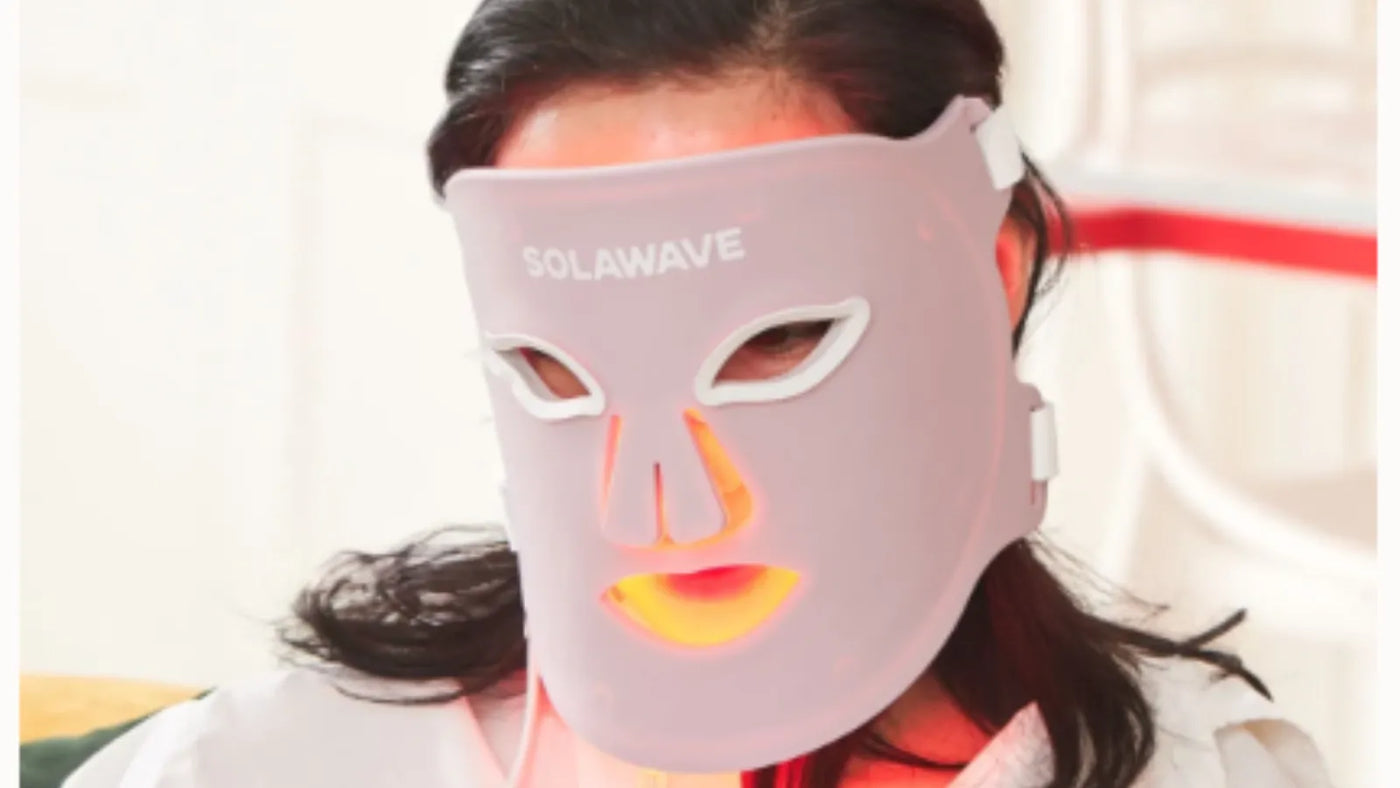

How To Choose Activating Serum for Light Therapy
An activating serum is a specialized skincare product created to support your skin’s natural processes and enhance its healthy appearance. Unlike everyday moisturizers or cleansers, these serums are highly concentrated, delivering powerful ingredients directly to your skin. Their role in your routine is versatile, addressing specific needs like signs of skin aging, hydration, or brightness. Because activating serums are so concentrated, you’ll often notice more visible improvements compared to traditional skincare products, making them a valuable addition to your regimen.
Types of Serums for Specific Needs
Hydrating serums, especially those with hyaluronic acid serum, are a great choice if you want to increase your skin’s moisture. Hyaluronic acid is well-known for holding up to 100 times its weight in water, helping your skin stay plump, hydrated, and healthy-looking. These serums draw moisture into your skin and are gentle enough for all skin types, making them a smart pick whether your skin is dry or just needs a hydration boost. Antioxidant serums help protect your skin from environmental stressors like pollution and UV rays. Ingredients such as vitamins C and E are often included for their ability to neutralize free radicals. Using an antioxidant serum regularly can help minimize the look of sun damage and support your skin’s resilience. With advancements in skincare, light therapy serum and device serum options are now available. These serums are designed to be used with specific skincare devices, like LED masks or microcurrent tools. Their formulas are often activated or enhanced by certain types of light or devices, which can help you see results more quickly, especially for skin rejuvenation and supporting your skin’s natural recovery.
Serums for Targeted Skin Issues
If you’re focused on smoothing wrinkles, look for a serum for wrinkles with active ingredients like retinol or peptides. These ingredients support healthy collagen production, which helps firm your skin and reduce the look of wrinkles. Many of these serums also include antioxidants to help protect your skin from further visible damage, helping you maintain a more youthful appearance. For fine lines, choose serums that emphasize hydration and skin elasticity. These formulas help plump your skin and smooth the look of fine lines, while also supporting your skin’s moisture barrier to help prevent new lines from forming. With regular use, you’ll notice smoother, more radiant skin. If you’re dealing with specific concerns like dark spots or uneven tone, targeted serums can help. Hyperpigmentation—those stubborn dark spots—can be addressed with specialized serums that focus on the melanin production process, which is what causes uneven tone. These serums use carefully chosen ingredients to help fade existing spots and prevent new ones from appearing. Key ingredients to look for include:
-
Vitamin C: This antioxidant is known for its brightening abilities. It helps block the enzyme tyrosinase, which is involved in melanin production. Vitamin C also helps fade existing dark spots and supports a more radiant complexion by fighting oxidative stress.
-
Kojic Acid: Derived from fungi, kojic acid helps reduce melanin production and is especially effective on areas affected by sun exposure, age spots, or zits. Its ability to reach deeper skin layers makes it a strong choice for evening out your skin tone.
-
Alpha Arbutin: This gentle ingredient also targets melanin production by blocking tyrosinase activity. It’s suitable for all skin types, including sensitive skin, and helps even out tone and fade dark spots with less risk of irritation.
Serums designed for hyperpigmentation can help you achieve a more even, luminous complexion. By using ingredients like Vitamin C, kojic acid, and alpha arbutin, these serums address the root causes of dark spots and uneven tone. With consistent use, you’ll notice clearer, brighter skin.
LightBoost Topicals for All Types of Light Therapy
Solawave’s LightBoost Topicals are specially formulated to help you get the most out of your Red Light Therapy routine. Developed after years of research, these topicals are designed to enhance absorption, deeply hydrate, and support healthy collagen for skin that looks radiant and refreshed.
LightBoost Technology is at the heart of this collection. This unique complex features powerful ingredients that work alongside Light Therapy to visibly improve the appearance of skin aging and imperfections. In studies, using LightBoost actives with Light Therapy delivered more noticeable results than using either one alone.
The science behind LightBoost centers on energizing your skin’s mitochondria—the tiny powerhouses in your cells. When energized by Red Light, mitochondria produce ATP, which fuels important activities like healthy collagen production. LightBoost Topicals are formulated to support this process, helping your skin look firmer, smoother, and more luminous.
In addition to supporting your skin’s natural energy, LightBoost Topicals provide antioxidant protection. This helps your skin maintain the positive effects of Light Therapy, while also revitalizing and boosting your natural glow.
You can choose from several LightBoost Topicals to fit your needs:
Each formula is crafted to pair perfectly with your Solawave device, so you can experience smoother, more radiant, and healthier-looking skin with every use.
Selecting Serums for Different Skin Types
Choosing the right activating serum for your skin type can help you get the most out of your skincare routine. Every skin type has its own unique needs, so understanding what your skin responds to will guide you toward a serum that truly supports your goals. It’s not just about the active ingredients—the overall formula should fit your skin’s characteristics and comfort level.
-
Sensitive Skin: If your skin is easily irritated, look for serums with calming ingredients like aloe vera, chamomile, or centella asiatica. These help soothe your skin and reduce visible redness. It’s best to avoid serums with high concentrations of acids, as these can sometimes be too strong. Fragrance-free and hypoallergenic options are also a smart choice, since they’re less likely to cause unwanted reactions.
-
Oily or Acne-Prone Skin: For oily or pimple-prone skin, seek out serums with ingredients like salicylic acid, niacinamide, or tea tree oil. These help manage excess oil and keep zits at bay. Non-comedogenic serums—meaning they won’t clog pores—are ideal. Lightweight, water-based formulas deliver the benefits your skin needs without adding extra shine.
-
Dry or Mature Skin: If your skin feels dry or you’re noticing more signs of skin aging, look for serums with hyaluronic acid, glycerin, and peptides. These ingredients help your skin retain moisture and support a smoother, more supple appearance. For mature skin, antioxidants like vitamin C can help protect against visible signs of aging and environmental stress, while also supporting your skin’s natural barrier.
-
Patch Test for Allergy Concerns: Before adding a new serum to your routine—especially if your skin is sensitive—do a patch test. Apply a small amount to a discreet area, like behind your ear or on your inner arm, and wait 24-48 hours. If your skin stays calm, it’s generally safe to use. This simple step helps you avoid unwanted reactions and ensures the serum is a good fit for you.
Pay attention to how your skin responds over time, and don’t hesitate to adjust your choices as your needs change. If you’re unsure about what’s best for your skin, reaching out to a skincare professional can be helpful.
Incorporating Activating Serums Into Your Skincare Routine
How you apply your serum can make a big difference in how well it supports your skin. Start with a gentle cleanse to remove impurities and makeup. If you use a toner, apply it next to prep your skin for better absorption. Then, use your fingertips to gently pat a small amount of serum onto your face and neck—no need to rub or tug. Follow with a moisturizer to lock in hydration and support your skin barrier. If you’re layering more than one serum, start with the thinnest texture and work up to the thickest. If you use treatments like chemical exfoliants, consider alternating them with your serum rather than layering, to help prevent irritation.
Your routine might shift from morning to night. In the morning, focus on serums that help protect against environmental stress, like an antioxidant serum. At night, reach for serums that support your skin’s natural renewal, such as those with retinol or peptides. This approach works with your skin’s natural rhythms and helps you get the most from your products.
Your skin’s needs can change with the seasons, age, or even your daily routine. Being flexible and adjusting your serum choices as needed can help you maintain healthy, radiant skin.
-
Seasonal Adjustments: In winter, your skin might crave extra hydration to combat dryness from cold air and indoor heating. A serum with hyaluronic acid or glycerin can help keep moisture in. During humid summer months, a lighter, water-based serum can hydrate without feeling heavy or greasy.
-
Age Considerations: As your skin matures, it may need more support for hydration, firmness, and elasticity. Updating your serum to include ingredients like retinol, peptides, and antioxidants can help address these needs, supporting healthy collagen and helping your skin look smoother and more resilient.
By staying in tune with your skin and making thoughtful choices about your serums, you can keep your routine effective and responsive to your needs. The journey to finding your ideal serum is personal—what works best for you may change over time. Always check ingredients, do patch tests for new products, and adjust as your skin evolves. With the right approach, you’ll enjoy healthier-looking, more radiant skin every day.






















